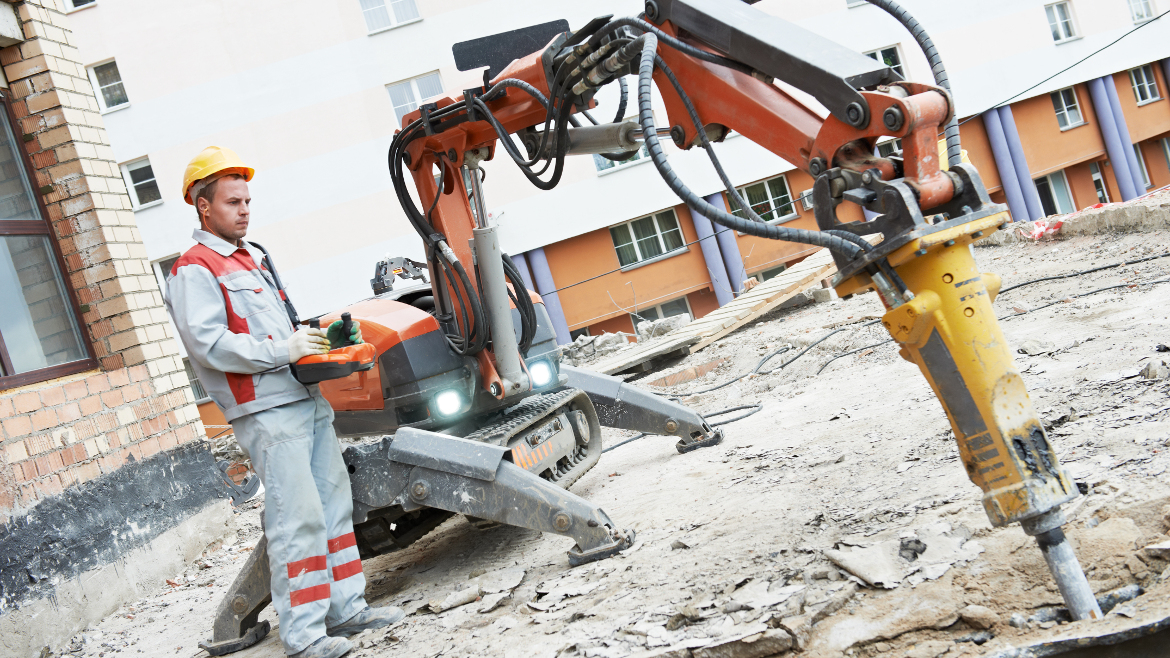Earlier this year the Dubai Future Foundation unveiled its new office building, something of an anomaly among the steel- and glass-skyscrapers that surround it. A 250-sq-metre, curved block of cement, it is the first structure of its kind to be built entirely by 3D printing technology.
The building is a prototype, and most likely temporary. But it has successfully demonstrated the potential of 3D technology: it was built in just 17 days for US$140,000, using half the labour and 70% of the material required by traditional techniques.
3D printing is just one way in which robotic automation is used in construction. Until recently, buildings and building sites were too complex for robots, but that is changing. Robotic systems are becoming agile enough to work safely alongside humans in difficult spaces, while software advances are helping them autonomously to navigate irregular environments.
As a result, automated building technologies are on the rise. They promise not just to cut construction costs and free human builders from dangerous work but will perhaps give us entirely new kinds of buildings.
A number of new technologies seek to automate traditional construction techniques, such as bricklaying. Hadrian, for example, is a brick-and-mortar-laying robot developed by Fastback Robotics, an Australian company, which can lay 1,000 bricks per hour at an accuracy of 0.5 mm. At that rate, Hadrian could produce a standard-size house in two days. Dutch company MX3D, meanwhile, is developing a system of robotic arms fitted with welding heads than can build bridges in situ.
Robots such as these are typically guided by humans. Others are more autonomous, turning digital designs into physical buildings without human oversight. In 2011, for example, a team from ETH Zürich’s Institute for Dynamic Systems and Control demonstrated a 6-metre tall tower constructed from 1,500 polystyrene bricks assembled one by one by a fleet of drones. The system devised flight paths for the drones based solely on the digital building design, and no human instruction was needed.
Drones have many advantages in construction. They can reach where humans or cranes cannot, allowing them to work in tight spaces between buildings or on sites without street access. Drones can collaborate, too, and get out of the way when they are not needed. Roboticists expect that, given the payload and agility limitations of drones, the most likely construction aid of the future will be large numbers of small robots—probably drones—working together.
New construction techniques enable new architectural forms. The Romans developed sophisticated timber cranes that allowed them to lift heavier weights to greater heights. The invention of the elevator allowed for skyscrapers. Computer-aided design enabled more geometrically daring and gravity-defying architecture. So what kinds of building will robot builders allow?
For a start, the buildings they create are likely to be more sustainable. 3D printing allows for buildings that use less material, as designs are typically constructed of a single piece without the need for supporting beams or other additional substructures.
The technology is also encouraging engineers to develop new materials with which to print, such as self-healing concrete. Students at the Institute for Advanced Architecture of Catalonia in Spain have developed a robot that can print buildings out of sand or soil. Their robot “minibuilders” can quickly and inexpensively construct buildings of any size, as they can scale any structure, theoretically indefinitely, and spray new material from their robotic arms as they rest on parts already set.
This could allow buildings to be constructed on site without transporting heavy materials, or open construction possibilities in extremely remote locations. Already, British architecture firm Foster + Partners is working with the European Space Agency to create a system that can print a building on the moon using lunar dust. Similarly, NASA is working with architects on a six-legged robot that can assemble temporary constructions for astronauts working on the moon, using lunar soil and heating it to fuse together robust structures.
These projects provide a glimpse of the impact that automation will have on the built environment. Robotics will not only allow buildings with new shapes and new structures but will also change the economics of where in the world—or beyond—they can be constructed.
What architectural innovations would you like to see arise from robotic construction? Share your thoughts on the Future Realities LinkedIn group, sponsored by Dassault Systèmes.
Sponsored by:





